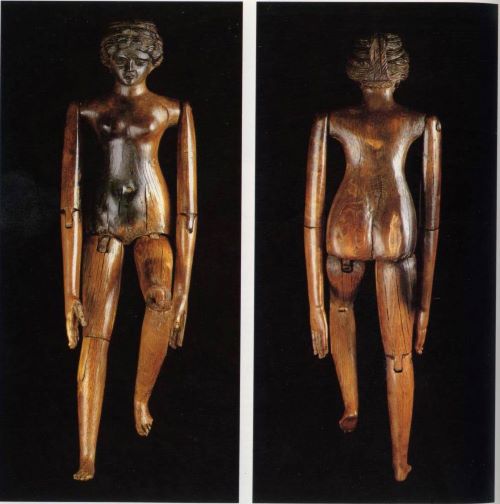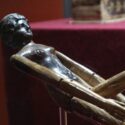We would like to share a different story. The beautiful but sad story of Crepereia and her doll. It is the story of a young girl who lived eighteen centuries ago, and it includes her doll. This is a wonderful story of love and consolation. Her story has been handed down to us by the objects found in her sarcophagus. These are now kept in the museum of the Centrale Montemartini. If you would like to know more on Crepereia and her doll, we’d be glad to arrange a special tour for you. After the Colosseum, and the Vatican, we would welcome the opportunity of taking you to see the less known sites of Rome.
Who was Crepereia?
Crepereia was a young girl aged 13. She died in Rome and the causes of her death are unknown. She was already betrothed. Her death must have been a tragedy for her parents who nevertheless, at the moment of the final parting, decided to bury her in a magnificent sarcophagus. They accompanied her final voyage with a series of marvellous treasures. She was buried with different objects, including a doll. Something we imagine she cherished during her lifetime and that will now accompany her forever.
Crepereia and her doll
According to the tradition of Rome at the time, unmarried women who died were allowed to take their personal belongings, their dearest ones, with them to the grave. Crepereia lived around the middle of the 2nd century BC and most probably belonged to a wealthy family, the Tryphaena. She was buried with her doll. A perfectly jointed and beautiful doll. At first it was thought to be made of oak or mahogany wood. After a careful scientific analysis, it turned out to be ivory instead, hardened by water.

Crepereia and her doll
The doll, 23 cm tall is not a common toy but rather a “prestigious” object, a work of art, with a finely sculpted face, almost as if it were a portrait. The technical skill of the craftsman who created it also stands out in the body with movable joints. The legs and arms are connected to the trunk with small pins. This type of joint allows only anatomically correct movements to the limbs, and denotes an extremely high level of craftsmanship. It is possible that the doll had been designed to wear clothes, since – unlike its trunk – its hands, feet and head have been carved with extremely high detail.
How did they find her?
Her long sleep lasted from the time she was buried until the year she was found, 1889, during the construction of the Palace of Justice (now the Supreme Court of Cassation) what Romans have always called the ‘Palazzaccio’.
Come to Rome and take one of our tours. We’d be glad to share with you some of the less-known stories of the Eternal City, like the one of Crepereia and her doll.

